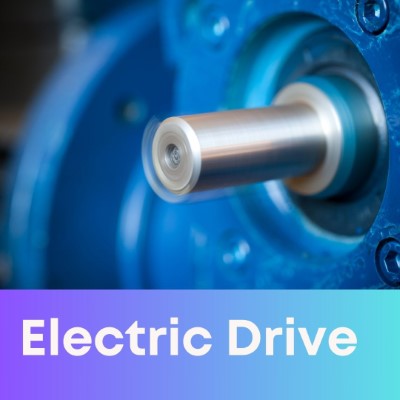Understanding the Basics
Welcome to the “Introduction to an Electric Drive” course. This course assumes you already know how electric motors work, including DC motors and induction motors. Understanding the basic principles of motor operation is essential, but it’s not enough. This course is about applying that knowledge to select the right motor for an application and predicting the performance of the load. This is the essence of electric drives.
Importance of Electric Drives
Knowing how an electric motor works provides the foundation, but applying this knowledge to practical scenarios is what electric drives are about. This involves selecting suitable motors for specific applications and improving performance metrics like efficiency and torque ripple minimization. Understanding the fundamentals of electric drives is valuable and rewarding for an engineering career.
What is an Electric Drive?
An electric drive gives purpose to an electric motor by enabling it to fulfill specific application requirements. It involves understanding the motor’s behavior under load conditions and ensuring the motor and load work harmoniously to meet functional and performance requirements.
Components of an Electric Drive
- Motor: Converts electrical energy into mechanical energy.
- Load: The mechanical device that the motor drives.
- Power Electronics and Control Unit: Controls the motor’s speed and enhances performance.
An electric drive can be represented as: Electric Drive=Motor+Load+Power Electronics and Control Unit\text{Electric Drive} = \text{Motor} + \text{Load} + \text{Power Electronics and Control Unit}Electric Drive=Motor+Load+Power Electronics and Control Unit
Understanding the Load
What is a Load?
A load is a mechanical device capable of rotating around an axis to fulfill a specific purpose. However, the load cannot produce the torque required for rotation; it needs an external torque-producing device, such as a motor.
Load Characteristics
- Torque Requirement: Loads develop torque opposite to the supplied torque while rotating. For example, fans, blowers, and pumps produce opposing torque when they start rotating.
- Speed and Torque Relationship: Generally, higher speeds require higher torque. Understanding the load’s speed and torque characteristics is crucial for selecting the appropriate motor.
Understanding the Motor
What is a Motor?
A motor is a mechanical device that converts electrical energy into mechanical energy. It produces a fixed amount of torque at a fixed speed. Generally, motors produce less torque at higher speeds and more torque at lower speeds.
Motor Characteristics
- Torque Production: The motor’s torque production depends on speed. At higher speeds, motors typically produce less torque, while at lower speeds, they produce more torque.
- Matching Motor and Load: It’s essential to match the motor’s torque-speed characteristics with the load’s requirements for optimal performance.
Role of Power Electronics
Functional Requirements and Performance Improvement
Power electronics and control units are crucial for converting power and enhancing performance. They fulfill the functional requirements of both the motor and the load.
Applications of Power Electronics
- Conversion: AC to DC or DC to AC conversion based on motor requirements and supply availability.
- Performance Enhancement: Improving efficiency and minimizing torque ripple.
- Fixed and Variable Speed Applications: Modern power electronics are essential for both fixed and variable speed drives.
Power Electronics in Fixed Speed Drives
Even for fixed speed drives, power electronics are necessary for converting AC to DC or vice versa, depending on the motor type and supply. They ensure efficient and compact designs compared to old methods involving separate motor-generator sets.
Conclusion
Understanding electric drives is crucial for applying motor knowledge to real-world applications. This course covers the essential components of an electric drive: the motor, load, and power electronics. The next step is to dive deeper into the speed-torque characteristics of motors and loads, and how to match them for optimal performance. By mastering these concepts, you can enhance the functionality and efficiency of electric drives in various applications.
